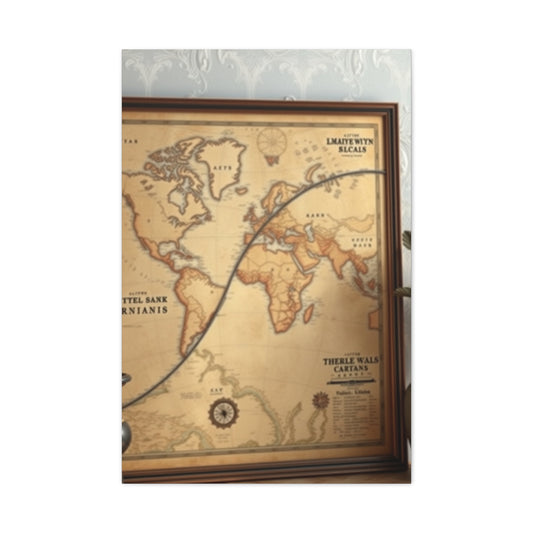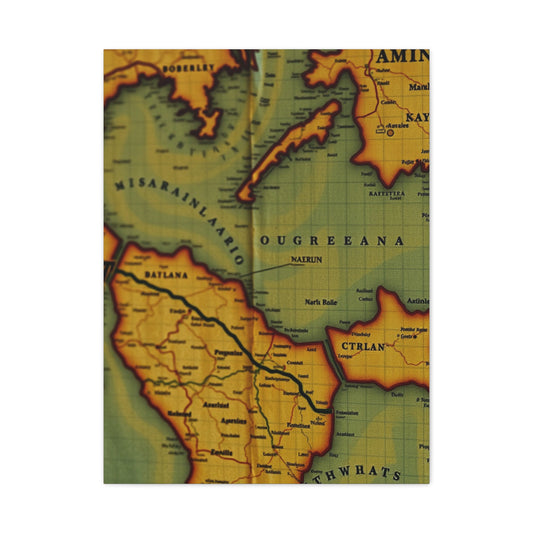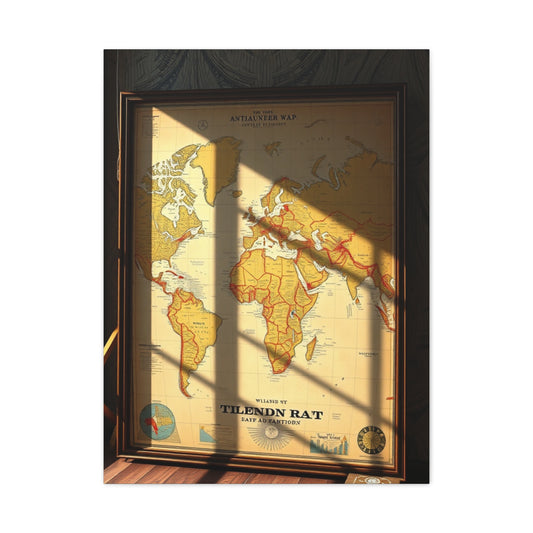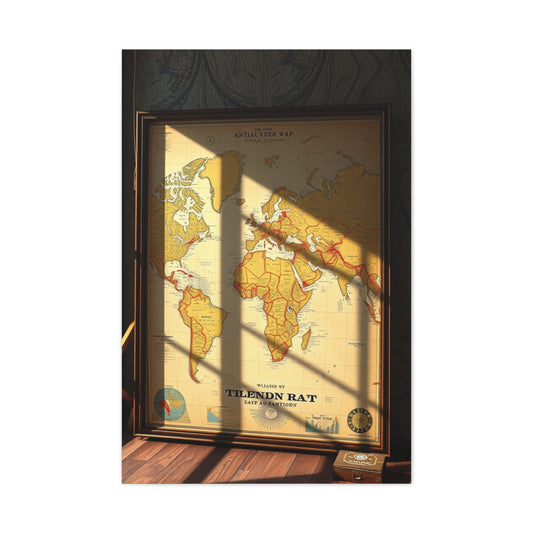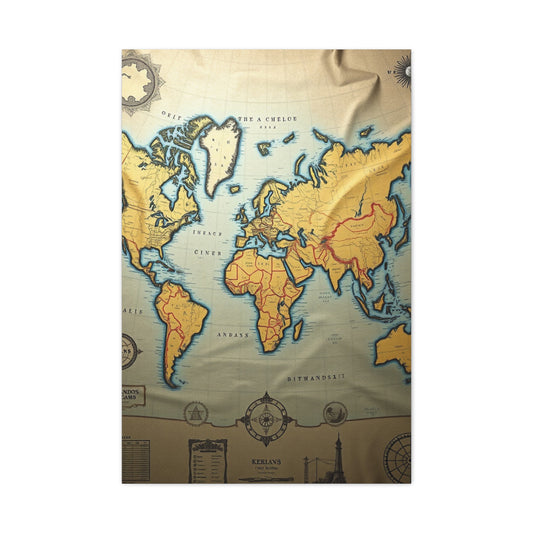Windows are not just openings in the wall; they are the eyes of your home, connecting interiors to the outside world while defining the overall aesthetic and ambiance of your living spaces. In modern interior design, window grills have evolved far beyond their traditional function of safety and security. Today, they serve as decorative elements, functional features, and integral components of a home’s personality. A thoughtfully designed window grill can completely transform a room, elevating both its visual appeal and its utility.
Modern window grill designs come in a wide spectrum, ranging from sleek minimalist styles to intricate, artistic patterns. Minimalist grills often feature clean, straight lines and subtle geometric shapes, creating a sense of symmetry and order. These designs complement contemporary interiors that favor simplicity and understated elegance. On the other hand, artistic or ornamental grills introduce a sense of flair, with complex motifs, curvilinear forms, or abstract patterns that can make a window the focal point of any room. The choice of design depends not only on the overall interior theme but also on the function and location of the window.
Materials play a crucial role in modern window grill design. While traditional wrought iron has long been favored for its strength, today’s designs also include lightweight aluminum, stainless steel, and powder-coated metal options. These modern materials offer durability and resistance to weathering while allowing for creative flexibility in patterns and finishes. Powder coating, for instance, can provide a smooth, matte, or glossy surface in virtually any color, enabling homeowners to match their grills with interior color schemes or exterior facades. In addition to aesthetics, these materials often require minimal maintenance, ensuring that window grills remain beautiful and functional for years to come.
The functional benefits of modern window grills are as important as their visual appeal. Safety is a primary concern, especially in households with children or pets. Grills act as a protective barrier without obstructing natural light or ventilation. Unlike heavy, clunky bars of the past, contemporary grills are designed to integrate seamlessly with windows, offering protection that feels almost invisible while enhancing the overall design. Some designs also allow windows to open fully for cleaning, emergency exits, or ventilation, proving that practicality and aesthetics can coexist beautifully.
Modern window grill designs also consider the relationship between indoor and outdoor spaces. Many homeowners seek to maintain a connection with the natural environment, and grills can play a supportive role in this regard. For instance, horizontal or vertical linear patterns create a sense of openness, drawing the eye toward outdoor views, while intricate patterns can frame scenic elements, turning a garden, tree, or skyline into a living artwork visible from inside. Some grills even incorporate integrated shelves, planter boxes, or hooks for hanging greenery, effectively merging functionality, safety, and nature in a single design element.
The integration of window grills into a home’s architecture has become increasingly sophisticated. Architects and interior designers now treat grills as extensions of the home’s overall style rather than merely protective devices. For example, in modern minimalist homes, sleek linear grills can accentuate the clean, geometric lines of the architecture, creating a seamless visual flow. In more traditional or eclectic homes, grills with ornate patterns, latticework, or handcrafted detailing can serve as decorative highlights that elevate the character of the space. The right grill design harmonizes with other architectural elements, such as door frames, ceiling beams, and furniture, creating a cohesive and visually pleasing environment.
Lighting and shadow also play a significant role in enhancing the impact of window grills. As natural sunlight filters through the patterns, it casts intricate shadows on walls and floors, introducing dynamic movement and texture to a room. Morning sunlight may highlight one part of the grill, while evening light transforms it completely, creating an ever-changing visual experience. Homeowners can intentionally use this interplay of light and shadow to enhance interior aesthetics, turning functional safety features into elements of artistic expression.
Another advantage of modern window grills is the ability to customize designs according to individual taste and requirements. Customization options are nearly limitless, ranging from geometric motifs, floral patterns, abstract forms, or even personalized designs that reflect a family’s identity. This personalization ensures that window grills do not feel like generic add-ons but rather integral components of a home’s aesthetic narrative. Designers often work with clients to ensure that the scale, proportion, and orientation of the grill harmonize perfectly with the window size, room layout, and exterior facade, achieving a polished and intentional look.
Security innovations have also influenced modern window grill design. Contemporary grills can incorporate advanced locking mechanisms, reinforced joints, and tamper-proof features while maintaining elegance. The aim is to create protective barriers that do not make the home feel closed off or fortress-like. This balance between safety and style has redefined the perception of window grills, making them desirable rather than merely functional. For families with children, grills can also offer peace of mind, allowing them to enjoy open windows without worrying about accidents.
The versatility of modern window grill designs allows them to be used in nearly every room of the house. In living rooms, grills can frame large picture windows, turning them into architectural statements. In bedrooms, grills can provide security while maintaining a light and airy feel, often paired with soft curtains or blinds for additional privacy. Kitchens and bathrooms benefit from grills that allow ventilation without compromising safety, while study areas or home offices can use them as decorative focal points that inspire creativity. Outdoor-facing windows, such as those on terraces, balconies, or front facades, gain added charm with grills that complement landscaping, architectural details, and exterior lighting.
Color selection is another important consideration in modern window grill design. Neutral tones like black, white, bronze, or grey are versatile and timeless, seamlessly integrating with a variety of interior and exterior styles. Bold or metallic finishes, such as gold, copper, or deep blue, can make a strong design statement, turning a window into a focal point. Some designs even incorporate dual-tone or gradient finishes, creating visual depth and interest that changes depending on the angle of light.
Modern grills are not limited to flat or single-plane designs. Multi-layered, three-dimensional, or sculptural grills have gained popularity, adding depth and artistic dimension to windows. These designs can function as partitions within larger window spaces, providing subtle separation between different areas while maintaining an open, airy feel. Layered designs also allow for creative combinations of materials, such as wood and metal, or metal and glass, resulting in hybrid elements that feel both contemporary and unique.
Maintenance is often a concern for homeowners, but modern materials and coatings have made window grills far easier to care for than ever before. Powder-coated metals resist rust, corrosion, and fading, requiring only periodic cleaning with a damp cloth. Wooden grills are treated with protective finishes that preserve color, prevent warping, and extend lifespan, while composite materials offer durability with minimal upkeep. This combination of beauty, functionality, and convenience ensures that window grills remain a valuable long-term investment for the home.
Ultimately, modern window grill designs offer a harmonious blend of safety, functionality, and aesthetic appeal. They are no longer seen as purely practical elements but as integral parts of interior and exterior design. By carefully selecting materials, patterns, finishes, and proportions, homeowners can transform ordinary windows into extraordinary features that enhance the overall ambiance of the home. Thoughtfully designed grills complement natural light, accentuate architectural details, and integrate with interior furnishings, creating spaces that feel both secure and visually captivating.
From minimalist linear designs to intricate artistic motifs, modern window grills have the power to redefine the atmosphere of any room. They provide safety without sacrificing beauty, flexibility without compromising style, and functionality without diminishing charm. Whether used in living rooms, bedrooms, kitchens, or outdoor-facing windows, these grills are a testament to how practical elements can evolve into design statements that elevate the entire home.
With creativity and attention to detail, a simple protective feature can be transformed into a sophisticated design element that enriches every corner of your home. Modern window grill designs invite homeowners to rethink the role of windows, embracing the opportunity to merge security, style, and personality in a way that enhances daily living. They embody the perfect balance of function and fashion, turning each window into a statement of design intelligence and aesthetic sophistication.
The Elegance of Modern Window Glass Designs
Windows are more than just portals to the outside; they are powerful design elements that shape the look, feel, and functionality of a home. Among all the components of a window, glass plays the most vital role in defining the atmosphere of any space. Modern window glass designs go far beyond the simple notion of transparency. They combine innovation, aesthetics, and energy efficiency to create interiors that are brighter, more welcoming, and visually striking. The right choice of glass can completely transform a room, bringing in natural light, framing beautiful outdoor views, and establishing a unique character that resonates with the home’s style.
Large glass panels have become a signature element of contemporary architecture. Floor-to-ceiling windows, expansive sliding glass doors, and wide picture windows are not only visually stunning but also enhance the perception of space. By removing visual barriers, these windows allow sunlight to flood interiors, creating a natural sense of openness and warmth. For urban apartments with limited space, such windows can make rooms feel more expansive and less confined, while in suburban or rural homes, they provide uninterrupted views of landscapes, gardens, and scenic horizons. The expansive nature of modern glass invites nature indoors, bridging the gap between interior and exterior environments.
Energy efficiency is a cornerstone of modern window glass design. Contemporary glass technology incorporates advanced features such as double or triple glazing, low-emissivity coatings, and gas fills between layers to minimize heat transfer. These innovations help maintain comfortable indoor temperatures throughout the year, reducing dependence on air conditioning or heating systems. Energy-efficient glass also reduces UV radiation, protecting furniture, flooring, and fabrics from fading while contributing to sustainable living. Homeowners no longer have to choose between aesthetics and functionality; modern glass can provide both beauty and energy savings simultaneously.
Variety in glass finishes and textures allows for an incredible range of design possibilities. Clear glass offers unobstructed views and maximum light, perfect for areas where openness is desired. Frosted or patterned glass provides privacy without sacrificing style, making it ideal for bathrooms, bedrooms, or offices. Tinted and reflective glass can reduce glare, add a sense of sophistication, and even create subtle color effects that change with the angle of light. Decorative etched glass, stained glass, or sandblasted designs bring artistry to a functional element, turning windows into dynamic focal points that enhance a room’s overall character.
Glass design also influences the emotional atmosphere of a space. Sunlight streaming through expansive panels can energize a living room in the morning, while softer light filtering through frosted glass can create a calm and intimate bedroom environment. Designers often consider the direction of natural light, the surrounding landscape, and the intended function of each room when selecting glass types. The right glass enhances mood, regulates brightness, and ensures that each room feels balanced and harmonious. The interaction between light and glass creates a dynamic environment, where shadows, reflections, and highlights shift throughout the day, enriching the interior experience.
The structural integration of modern glass is equally important. Frameless or slim-framed windows emphasize minimalism, providing clean lines that highlight the architecture of a home rather than detracting from it. In contrast, windows with bold frames or geometric divisions can introduce rhythm and structure, complementing contemporary interiors or adding contrast in eclectic designs. Designers often experiment with mixed materials, combining glass with wood, aluminum, or steel frames to achieve a modern aesthetic while ensuring durability and longevity. The right combination of materials enhances both the look and function of glass windows, allowing homeowners to create a cohesive design narrative across different rooms.
Modern glass windows are also remarkably versatile in terms of functionality. Sliding, tilt-and-turn, casement, and pivot designs offer varied options for ventilation, cleaning, and accessibility. Glass can be engineered to slide effortlessly, open fully, or tilt for controlled airflow, combining convenience with elegance. Some designs even incorporate smart technology, allowing homeowners to adjust transparency, control solar gain, or integrate automated blinds. Smart glass can switch from clear to opaque with the touch of a button, offering instant privacy without the need for curtains or shades. Such technological innovations make modern glass not only beautiful but highly adaptable to evolving lifestyle needs.
Safety and durability are critical considerations in modern window glass design. Laminated and tempered glass provides resistance to breakage, ensuring protection while maintaining aesthetic appeal. Laminated glass layers multiple sheets with an interlayer that holds the glass together if it shatters, while tempered glass undergoes a special heat treatment to increase strength and reduce injury risk upon breakage. These advancements mean homeowners can enjoy large, open designs without compromising on safety, combining peace of mind with contemporary elegance.
Acoustic performance is another dimension where modern glass excels. Double-glazed or acoustic glass can significantly reduce external noise, transforming urban apartments or homes near busy streets into serene retreats. This noise reduction contributes to mental well-being, improves focus in work-from-home setups, and enhances the overall comfort of living spaces. In addition, combining glass with thoughtfully designed frames and seals prevents air leakage, enhancing both energy efficiency and noise insulation simultaneously.
The impact of glass is not limited to functionality alone; it can profoundly influence interior decoration. Expansive glass panels create a neutral backdrop that complements furniture, décor, and art. Patterned or tinted glass can introduce visual accents, colors, or textures that coordinate with the overall design theme. By framing outdoor scenery, glass effectively extends interior décor into the natural environment, making gardens, patios, and surrounding landscapes an integral part of a room’s visual composition. Interior designers often leverage this connection to nature, combining glass with greenery, reflective surfaces, and light-toned furnishings to create tranquil, cohesive spaces.
Lighting design further enhances the beauty of modern glass windows. By strategically placing windows in alignment with natural sunlight, designers can highlight textures, create patterns, and accentuate architectural features. Morning light can illuminate kitchen counters, afternoon light can enhance living rooms, and soft evening light can fill bedrooms with warmth. The interplay of natural and artificial light through glass creates a layered lighting effect that enhances mood, draws attention to focal points, and ensures that spaces feel lively and welcoming at all times.
Sustainability is increasingly important in glass window selection. Many modern glass options are manufactured using eco-friendly processes and materials, contributing to energy-efficient homes. Low-emissivity coatings, thermal breaks in frames, and advanced glazing techniques reduce energy consumption while enhancing indoor comfort. Homeowners can achieve a stylish, contemporary look while also reducing their environmental footprint, proving that modern window glass designs align with both aesthetic and ecological priorities.
Customization is another key advantage of contemporary glass. Homeowners can choose from a wide array of shapes, sizes, patterns, and finishes to create windows tailored to their exact requirements. Curved glass, corner panels, bay and bow window glass, or uniquely shaped panels allow for creative architectural expression. This flexibility ensures that glass complements every room’s function, interior theme, and desired mood. For example, a bedroom may feature frosted glass for privacy, a living room may showcase floor-to-ceiling clear panels for light and openness, and a kitchen may use tinted glass for glare reduction while framing a scenic backyard view.
The combination of functionality, aesthetics, and innovation makes modern window glass designs an indispensable element of contemporary homes. They enhance natural lighting, improve energy efficiency, provide privacy and safety, and create visually stunning environments that resonate with the homeowner’s style. With the thoughtful selection of glass type, finish, and placement, any room can be transformed from ordinary to extraordinary, reflecting sophistication, modernity, and elegance.
Modern window glass designs are no longer passive features of a home; they are active contributors to style, comfort, and functionality. By incorporating large panels, energy-efficient coatings, innovative textures, and smart technology, homeowners can create spaces that are brighter, safer, and visually compelling. From panoramic living room views to serene bedroom retreats, glass enhances every environment, turning natural light, outdoor scenery, and design imagination into integral components of modern living. The elegance of contemporary glass ensures that windows remain more than just functional openings—they become defining elements that shape the entire character of a home.
Modern Wood Window Frame Designs for Warmth and Character
Wood has always been a cherished material in architecture and interior design, celebrated for its warmth, natural beauty, and timeless appeal. When it comes to window frames, wood continues to hold a special place in modern homes, bridging the gap between traditional charm and contemporary elegance. Modern wood window frame designs are crafted to enhance not only the aesthetic appeal of a space but also its functionality, insulation, and overall ambiance. These frames can transform a simple window into a defining element of a home, offering warmth, texture, and personality that no other material can quite replicate.
One of the key reasons wood remains a popular choice for window frames is its versatility. It can be adapted to suit a wide range of interior styles, from rustic and traditional to sleek and minimalist. Light-toned woods such as oak, maple, or pine bring a sense of brightness and openness, making smaller rooms feel more spacious. They create an airy, uplifting atmosphere, particularly when paired with large glass panels that allow sunlight to flood the interior. Darker woods such as walnut, mahogany, or teak, on the other hand, offer depth and sophistication, creating a cozy and intimate environment that complements modern and industrial designs. The variety of wood tones and finishes allows homeowners to align window frames seamlessly with furniture, flooring, and decorative elements, creating a cohesive design narrative throughout the home.
Modern wood window frames are no longer confined to traditional boxy or rectangular shapes. Designers experiment with diverse geometries, incorporating angled, curved, or asymmetrical forms that add visual interest to interiors. Large floor-to-ceiling wooden frames can create a bold statement, turning windows into striking architectural features. Smaller wooden frames with intricate detailing or layered designs can act as subtle focal points, adding elegance without overwhelming the room. The ability to customize shape and proportion ensures that wood frames adapt perfectly to both the functional requirements of a space and the homeowner’s design vision.
Durability and longevity have evolved significantly in modern wood window frame design. Unlike older constructions where untreated wood would warp, crack, or succumb to moisture over time, contemporary wood frames are treated with protective coatings that resist environmental damage. Advanced sealants, varnishes, and water-resistant finishes prevent swelling, fading, and decay, ensuring that the frames retain their beauty for decades. Some manufacturers also combine wood with composite materials, reinforcing strength while maintaining the natural look and feel of timber. This balance of aesthetics and practicality ensures that wood frames are not just visually appealing but also a reliable long-term investment for any home.
Insulation is another area where modern wooden frames excel. Wood is a natural insulator, providing excellent thermal and acoustic performance. In colder climates, it helps retain warmth, reducing the need for excessive heating, while in warmer regions, it contributes to a more balanced indoor temperature. Wooden frames also reduce external noise, creating quiet, peaceful interiors that feel cozy and relaxing. By enhancing comfort while offering elegant design, wood frames address both functional and aesthetic needs, making them highly versatile for every room in a home.
In terms of design versatility, wooden frames can be adapted to a wide variety of finishes and textures. Smooth, polished finishes emphasize modernity and minimalism, while rustic, textured finishes highlight natural grain patterns and convey an organic, earthy charm. Wooden frames can also be stained in numerous shades, from soft, light hues to deep, rich colors that make a dramatic statement. Some homeowners even opt for two-tone finishes or layered textures, blending modern and traditional aesthetics for a unique and visually compelling result. The design possibilities are endless, making wood a highly customizable option for contemporary window frames.
Functionality is seamlessly integrated into modern wood window designs. Sliding, tilt-and-turn, casement, or fixed windows can all be framed in wood, allowing for effortless operation and flexibility. Hardware such as hinges, locks, and handles is now designed to complement the wood’s natural appeal while providing durability and ease of use. Some wooden frames are even designed to accommodate modern features like integrated blinds, insect screens, or energy-efficient glass panels, merging convenience with elegance. This thoughtful integration ensures that wood frames are not just visually pleasing but also practical for everyday living.
The combination of wood with other materials adds an extra layer of sophistication to modern window frames. Aluminum-clad wood windows, for instance, feature a protective metal exterior that resists weathering while maintaining the warmth and texture of wood on the interior. Steel reinforcements provide additional structural strength for larger frames without compromising the organic appeal of timber. Some designs even incorporate glass inserts or decorative panels that contrast with the natural wood, creating a harmonious blend of textures that enhances the overall architectural style of a home.
Lighting plays a significant role in accentuating the beauty of wooden window frames. Natural sunlight highlights the grain patterns and textures of the timber, bringing out subtle color variations and intricate detailing. As light shifts throughout the day, wooden frames take on different tones and shadows, adding depth and dimension to interiors. Even artificial lighting can enhance the warmth and richness of wood, whether through recessed ceiling lights, pendant lamps, or strategically placed floor lamps. The dynamic interaction between wood and light ensures that window frames remain visually engaging throughout the day and night.
Wooden frames also contribute to the emotional and sensory experience of a home. Their tactile warmth invites touch, their texture evokes a sense of natural connection, and their visual appeal creates comfort and familiarity. In spaces designed for relaxation, such as bedrooms or living rooms, wooden frames complement furniture, fabrics, and décor to create a cohesive environment that feels harmonious and inviting. In kitchens or dining areas, wooden frames offer a balance between practicality and warmth, framing views of outdoor gardens or terraces while enhancing the overall character of the room.
Another advantage of modern wood window frames is their compatibility with sustainability initiatives. Responsibly sourced timber and eco-friendly finishes allow homeowners to enjoy the natural beauty of wood while minimizing environmental impact. Combined with energy-efficient glass and proper insulation, wooden frames contribute to sustainable living by reducing energy consumption, enhancing indoor comfort, and creating a healthier home environment. This alignment with environmental values makes wooden frames an attractive choice for eco-conscious homeowners who do not want to compromise on style or quality.
In addition to their functional and aesthetic benefits, wooden window frames offer immense design flexibility for both interiors and exteriors. They can be used to create accent walls, frame panoramic views, or introduce contrast against neutral-colored walls. In contemporary homes, wooden frames often complement minimalist décor, highlighting the simplicity and elegance of clean lines while adding warmth and depth. In more eclectic or rustic designs, the natural texture and grain of wood become a defining feature, adding character and charm to otherwise modern spaces. Wood seamlessly bridges traditional and contemporary styles, offering a design solution that feels timeless yet current.
Maintenance of wooden frames has become easier than ever, thanks to modern treatments and finishes. High-quality wood coatings protect against moisture, UV rays, and insect damage, ensuring longevity with minimal effort. Regular cleaning with a damp cloth and periodic refinishing maintain the wood’s beauty, keeping it looking fresh and inviting for years. This low-maintenance aspect enhances wood’s practicality, allowing homeowners to enjoy its natural warmth without the burden of intensive upkeep.
Ultimately, modern wood window frame designs are about more than just aesthetics—they are about creating harmony between comfort, functionality, and beauty. They provide insulation, durability, and a tactile, sensory experience that other materials cannot replicate. They enhance natural lighting, highlight architectural features, and complement furniture, décor, and interior design choices. By choosing the right wood, finish, and design, homeowners can create windows that are functional, sustainable, and visually captivating, transforming ordinary openings into defining elements of a home.
Wooden window frames embody the perfect combination of natural beauty, practicality, and modern innovation. They provide warmth, texture, and elegance while accommodating contemporary designs, energy efficiency, and durability. Each frame tells a story, connecting the indoor environment with nature, light, and architectural vision. Whether in minimalist, industrial, rustic, or eclectic homes, modern wood window frames can elevate interiors, enhance comfort, and create a sense of character that resonates throughout every room. They turn windows into works of art that define both the style and soul of a home.
Enhancing Home Curb Appeal with Modern Front Window Designs
Windows are often referred to as the eyes of a home, and when it comes to the front facade, they play a crucial role in defining first impressions. The design of front-facing windows can dramatically influence a home’s curb appeal, transforming it from ordinary to visually captivating. Modern front window designs go beyond mere functionality; they combine aesthetic appeal, light management, and architectural harmony to create entrances that are inviting, stylish, and expressive of personal taste. The right front window design can elevate a house’s exterior, adding depth, character, and a welcoming aura that draws attention even before guests step inside.
One of the most striking features of contemporary front windows is their ability to create balance and proportion in a home’s facade. Architects carefully consider the size, placement, and symmetry of windows to complement the building’s overall design. Expansive picture windows are often used to frame central views or highlight key architectural elements, creating a focal point that captures the eye. Alternatively, asymmetrical or uniquely shaped windows, such as trapezoids, arcs, or angular designs, add visual intrigue and break the monotony of conventional layouts. By thoughtfully positioning windows, homeowners can create a harmonious relationship between the exterior and interior spaces, enhancing the home’s appeal from both perspectives.
Materials and finishes play an essential role in front window design. Aluminum and steel frames offer sleek, modern lines, while wood frames provide warmth and texture that complement both contemporary and traditional exteriors. Powder-coated metals resist weathering and maintain a fresh appearance, while treated wood ensures durability and aesthetic longevity. Glass selection also impacts curb appeal; clear panels offer unobstructed views and abundant natural light, while frosted or tinted glass can add sophistication, privacy, and a sense of exclusivity. Decorative patterns or etched designs further elevate the visual impact, turning windows into works of art that enrich the facade.
Front windows also contribute to the emotional experience of entering a home. Large, welcoming panes can make an entryway feel open and inviting, creating an immediate sense of warmth for visitors. Windows with integrated sidelights or transoms enhance the grandeur of the entrance, allowing sunlight to filter into foyers or living areas and creating a bright, airy ambiance. The careful combination of window height, width, and style can dramatically influence the perceived scale and elegance of a home, making it feel more spacious, balanced, and thoughtfully designed.
Lighting, both natural and artificial, works hand in hand with modern front window designs to enhance curb appeal. During the day, sunlight interacts with window frames, glass textures, and surrounding surfaces, casting dynamic shadows that add depth and interest to the exterior. At night, strategically placed exterior lighting can highlight the architectural beauty of windows, creating a dramatic and inviting effect. Uplighting, recessed lighting, or subtle accent lights around frames can emphasize patterns, textures, and materials, transforming the facade into a visually engaging display that continues to captivate after sunset.
Functionality and security are key considerations in modern front window design. Many homeowners seek large, statement windows but also want practical features such as ease of opening, ventilation, and safety. Contemporary designs often incorporate reinforced glass, secure locking mechanisms, and durable frames that withstand environmental stress while maintaining elegance. Tilt-and-turn, casement, or sliding options allow controlled airflow, making spaces more comfortable without compromising the visual appeal of the window. By integrating security and convenience with style, front windows achieve a harmonious balance between beauty and practicality.
Customization is a defining feature of modern front window design. Homeowners can select sizes, shapes, materials, and finishes to suit their personal aesthetic preferences and the architectural style of their home. Some may opt for minimalist designs with clean lines and expansive glass for a modern, open look, while others may choose detailed mullions, geometric patterns, or custom etching for a more artistic and distinctive appearance. Customization ensures that front windows are not generic elements but unique expressions of style, enhancing both the character of the home and its visual identity within the neighborhood.
The integration of greenery and landscaping with front window design further enhances curb appeal. Window boxes, planters, and trellises can complement the architectural features, adding softness, color, and natural texture to the facade. Tall plants or climbing vines flanking windows create vertical interest, while low hedges or flowers beneath windows frame the glass beautifully. This connection between windows and the natural environment enhances both aesthetic appeal and the welcoming atmosphere of the entrance, creating a home that feels vibrant, alive, and carefully curated.
Energy efficiency is another important consideration for front-facing windows. Modern glass technologies, including double glazing, low-emissivity coatings, and insulated frames, help regulate indoor temperatures while minimizing heat loss or gain. Energy-efficient windows contribute to lower utility costs, improved comfort, and sustainable living, without compromising design or curb appeal. Homeowners can enjoy large, stylish windows that enhance the visual appeal of the home while performing optimally in terms of insulation, durability, and environmental responsibility.
The placement of front windows can also define and enhance architectural style. In contemporary homes, wide, floor-to-ceiling windows create sleek lines and a sense of openness. In traditional or colonial-inspired designs, multi-pane or grid-style windows evoke charm and structure, complementing other architectural details such as gables, shutters, and cornices. In eclectic or modern-fusion homes, combining different window shapes, sizes, and materials adds personality and visual intrigue. Front window design is not just about function; it is about establishing a visual narrative that communicates style, taste, and attention to detail.
Front windows can also serve as dynamic focal points that respond to seasonal and environmental changes. Sunlight filtering through expansive panes highlights different textures and patterns throughout the day. Rain on glass creates soothing visual and auditory experiences, while evening light showcases the interior ambiance to the exterior world. The interplay between interior lighting and front window design ensures that the home remains visually appealing both during the day and at night, offering a continuously engaging experience for residents and visitors alike.
Beyond aesthetics and function, modern front window designs can enhance the perceived value of a home. A thoughtfully designed facade with stylish, energy-efficient, and well-integrated windows signals quality, care, and attention to detail. Potential buyers are naturally drawn to homes that combine visual appeal with practical features, making front window design a strategic investment in both lifestyle and long-term property value.
Architectural innovation has also influenced modern front window trends. Corner windows, angled designs, and mixed-material frames allow homeowners to break away from traditional configurations, creating unique visual experiences that stand out in the neighborhood. Some designs incorporate integrated shading solutions, automated blinds, or smart glass that adjusts transparency for privacy and light control, demonstrating how technology can enhance both style and functionality.
Modern front window designs are essential for creating a strong, memorable impression of a home. They combine aesthetics, functionality, energy efficiency, and customization to enhance curb appeal while maintaining security and comfort. By selecting the right materials, shapes, sizes, and finishes, homeowners can transform ordinary facades into stunning visual experiences, turning windows into defining elements that reflect personal style, architectural vision, and a welcoming atmosphere. Whether through expansive glass panels, unique geometric shapes, or thoughtfully integrated landscaping, front windows have the power to elevate a home’s exterior and set the tone for the entire living experience within.
Innovative Modern Box and Corner Window Designs
Windows are no longer just openings to let light in or air out; they are essential elements in shaping the design, functionality, and atmosphere of a home. Among the most versatile and visually striking options are box and corner window designs. These innovative approaches take full advantage of unused or awkward spaces, transforming them into areas that are both functional and aesthetically compelling. Whether it’s a cozy reading nook, a panoramic view, or a seamless connection between indoor and outdoor spaces, box and corner windows have become hallmarks of modern architecture.
Box windows are particularly favored for their multifunctional design. Often recessed into walls, they provide depth and character that ordinary windows cannot. These windows can create a built-in seating area, offering the perfect spot for relaxation, reading, or enjoying a quiet morning coffee while being bathed in natural light. In living rooms, a box window can double as a display space for decorative objects, plants, or seasonal décor, making it a central feature that enhances both function and style. The cube-like shape of box windows adds visual structure to interiors, making them ideal for homes that embrace geometric forms and clean lines.
Corner windows, on the other hand, redefine the perception of space and connection with the outdoors. By extending glass along two intersecting walls, corner windows create uninterrupted sightlines that maximize natural light and frame expansive views. These windows blur the boundary between inside and outside, offering a panoramic perspective that enhances the sense of openness and freedom within a home. In smaller spaces, corner windows can make rooms feel larger by visually extending the interior into the outdoor environment. In larger homes, they serve as architectural statements, highlighting the beauty of both interior design and surrounding landscapes.
The versatility of these window designs extends to material and frame selection. Box and corner windows can be framed in wood for warmth and natural appeal, aluminum for sleek minimalism, or steel for industrial sophistication. Frameless or slim-frame designs emphasize openness, creating the illusion of a floating glass surface that seamlessly integrates with the walls. These modern frames not only provide structural support but also contribute to the aesthetic coherence of the space, enhancing both the interior and exterior appearance of the home. The combination of material, finish, and proportion allows homeowners to customize these windows to fit their unique design vision.
Functionality is a core strength of box and corner windows. Box windows often incorporate built-in storage beneath the seating area, offering a practical solution to space constraints while maintaining visual elegance. This makes them ideal for apartments, urban homes, or any area where maximizing functionality without compromising style is important. Corner windows can be designed with sliding or casement mechanisms, allowing controlled ventilation while maintaining uninterrupted views. Some designs even include operable sections that enable fresh air to circulate without obstructing the panoramic experience. This balance of practicality and aesthetic appeal is what makes these window types so desirable in contemporary architecture.
Lighting plays a transformative role in both box and corner window designs. Box windows, with their recessed nature, allow light to filter in from multiple angles, creating soft shadows and layered illumination that enhances the ambiance of the room. Corner windows flood interiors with natural light from multiple directions, reducing the need for artificial lighting and creating a dynamic play of sunlight throughout the day. This infusion of light not only enhances visibility and comfort but also contributes to the emotional atmosphere of the space, making it feel open, airy, and welcoming.
The interaction of furniture, décor, and these window designs creates additional opportunities for creativity. Box windows naturally lend themselves to cozy seating arrangements, enhanced with cushions, throws, or even small tables. The area can serve as a multifunctional space for reading, working, or relaxing, combining comfort with practicality. Corner windows, due to their expansive nature, can highlight indoor plants, artwork, or decorative elements, framing them against the backdrop of natural light and outdoor views. This integration allows homeowners to create visually compelling interiors that feel thoughtfully curated and in harmony with their environment.
Architectural innovation also plays a significant role in these designs. Box and corner windows can be incorporated into a variety of layouts, from minimalist modern homes to eclectic or industrial spaces. For example, corner windows in open-plan living areas can create uninterrupted sightlines between living rooms, dining areas, and outdoor patios, enhancing the sense of connectivity. Box windows can break the monotony of flat walls, adding depth and dimension while creating functional alcoves. These designs allow architects and homeowners to reimagine how space is used, turning areas that were once overlooked into essential features of the home.
Sustainability is another advantage of these modern window designs. By maximizing natural light, box and corner windows reduce reliance on artificial lighting, lowering energy consumption and creating environmentally friendly interiors. Energy-efficient glass options, such as double glazing or low-emissivity coatings, further enhance thermal performance, keeping homes comfortable year-round. The combination of design, natural light, and energy efficiency ensures that these windows not only look beautiful but also contribute to sustainable living practices.
Customization is one of the most exciting aspects of box and corner windows. Homeowners can select dimensions, shapes, and frame materials to perfectly suit their spaces. Some prefer deep, wide box windows with cushioned seating and storage, while others may opt for slender, minimalist designs that accentuate light and views without dominating the room. Corner windows can range from subtle, right-angle designs to dramatic L-shaped expanses that wrap around entire walls. This flexibility allows for a tailored approach that balances style, functionality, and spatial requirements, making each installation unique.
The psychological and emotional impact of these windows cannot be underestimated. Box windows create intimate spaces that feel safe, cozy, and personal, offering a retreat from the demands of daily life. Corner windows, in contrast, cultivate a sense of freedom, openness, and connection with nature. They enhance mood, provide a sense of spaciousness, and foster well-being by allowing natural light, fresh air, and scenic views to permeate living spaces. The combination of functional utility and emotional impact makes these window designs particularly compelling for modern homeowners who value both style and comfort.
From a design perspective, the integration of greenery and natural elements around these windows enhances their appeal. Box windows can incorporate small planters, herbs, or decorative pots on the sill or within the recessed area, bringing a touch of nature indoors. Corner windows frame gardens, patios, and scenic landscapes, creating a seamless connection between indoor décor and outdoor beauty. This interplay between architecture and environment enhances both the aesthetic and sensory experience of living spaces, ensuring that each room feels vibrant, engaging, and harmonious with its surroundings.
Maintenance and durability are crucial considerations in modern window design, and box and corner windows have evolved to address these concerns. Modern materials, protective coatings, and thoughtful construction ensure long-lasting performance with minimal upkeep. Aluminum, steel, and treated wood resist weathering, warping, and corrosion, while tempered or laminated glass provides safety and durability. Cleaning solutions are also considered in the design, allowing operable sections or removable panes for ease of maintenance without compromising the visual appeal. This attention to detail ensures that these windows remain both beautiful and functional over time.
Ultimately, innovative box and corner window designs exemplify the perfect marriage of form and function. They transform unused or underutilized spaces into captivating focal points, enhancing natural light, spatial perception, and interior aesthetics. Whether creating a cozy reading nook, a panoramic living room view, or a seamless connection to outdoor environments, these windows redefine the way homes are experienced. Their versatility, customizability, and modern elegance make them essential features for contemporary architecture, proving that even the smallest or most overlooked areas can be transformed into moments of beauty and utility.
Box and corner windows represent a forward-thinking approach to modern home design. They maximize natural light, enhance spatial perception, and create functional, visually appealing spaces that enrich daily life. By carefully selecting materials, finishes, and configurations, homeowners can achieve windows that are not only stylish and innovative but also highly practical and emotionally rewarding. From intimate corners to expansive panoramas, these designs offer a transformative approach to living spaces, turning ordinary walls into extraordinary features that define the character, style, and essence of a home.
Modern Window Designs for Every Room: Bedrooms, Kitchens, and Staircases
Windows define the rhythm and character of interior spaces, shaping how light, air, and views interact with everyday living. While large picture windows and expansive glass panels make striking statements in living rooms or exteriors, specialized window designs tailored for bedrooms, kitchens, and staircases create comfort, functionality, and style where it is needed most. Modern window designs for these key areas are carefully crafted to balance natural light, privacy, ventilation, and aesthetic appeal, ensuring that every corner of the home feels harmonious, inviting, and visually engaging.
Bedrooms are intimate spaces where comfort and serenity are paramount. Modern bedroom windows are designed to frame light while preserving privacy and promoting a sense of calm. Floor-to-ceiling windows or wide casement designs invite abundant natural light, creating a refreshing atmosphere in the morning, while strategically placed frosted or tinted panes provide privacy without compromising openness. Some designs incorporate sliding panels, allowing controlled ventilation and effortless operation, ensuring that bedrooms remain airy and comfortable throughout the day. Window placement is crucial; aligning openings with natural sunlight patterns enhances mood, supports healthy circadian rhythms, and creates a tranquil retreat from daily stress.
A variety of window types are employed in modern bedroom design. Casement windows, which open outward like a door, offer excellent ventilation and unobstructed views, making them ideal for master bedrooms or rooms facing gardens. Tilt-and-turn designs provide versatility, allowing the top portion to tilt for air circulation while the full window opens for emergency access or cleaning. Picture windows, often combined with soft drapery or sheer blinds, frame scenic outdoor views while maintaining a minimalist aesthetic. Some designs even feature bay or box windows, creating cozy nooks that double as reading areas, seating, or storage, blending comfort and functionality seamlessly.
Kitchens present a unique set of challenges and opportunities for window design. Beyond aesthetics, kitchen windows must address ventilation, natural lighting, and practical access while complementing cabinetry, countertops, and appliances. Modern kitchen window designs often feature wide horizontal sliders or casement windows above sinks, allowing airflow to remove cooking odors and steam while providing clear visibility of outdoor spaces. Large windows also flood kitchens with light, making tasks such as cooking, cleaning, and food preparation more pleasant and efficient. In addition, the right window design can enhance the overall flow of a kitchen, visually extending workspaces and creating a connection to outdoor dining or garden areas.
Functional materials are essential in kitchen window design. Frames made from aluminum, treated wood, or vinyl resist moisture, heat, and daily wear, ensuring longevity and easy maintenance. Glass choices include clear panels for maximum visibility, frosted panes for privacy, or tempered glass for added safety. Some windows feature integrated insect screens or sliding mechanisms that enhance usability without compromising aesthetics. Modern kitchen windows also allow homeowners to add visual interest through mullion patterns, colored frames, or decorative glass, creating focal points that blend style and practicality.
Staircases are often overlooked in interior design, yet windows placed along stairwells can dramatically alter the atmosphere and functionality of these transitional spaces. Modern staircase windows bring light into otherwise dim or confined areas, making vertical circulation more inviting and visually engaging. Expansive or vertical windows highlight architectural features of the staircase while creating a sense of continuity between floors. Stairwell windows can frame outdoor landscapes, trees, or garden views, turning a functional pathway into an immersive visual experience. Proper window placement along staircases ensures even light distribution, reducing shadows and enhancing safety for daily use.
Design choices for staircase windows vary widely. Slim, vertical panes emphasize height and create an illusion of openness, while larger horizontal or panoramic windows provide scenic vistas. Some staircases feature corner or wrap-around glass, seamlessly connecting multiple walls and creating a dramatic architectural effect. Glass finishes can include clear, frosted, or tinted options, depending on the desired level of privacy and visual impact. Additionally, modern technology allows for operable sections, automated blinds, or integrated smart glass, offering both convenience and customization for homeowners who want to optimize light, ventilation, and energy efficiency.
A key benefit of modern window designs across bedrooms, kitchens, and staircases is the interplay between light, view, and interior décor. Natural sunlight highlights textures, colors, and furnishings, enriching the visual appeal of a space. In bedrooms, soft morning light through sheer curtains creates a soothing environment, while afternoon sun enhances warmth and comfort. Kitchens benefit from bright, evenly distributed light that energizes cooking and social activities, while staircases gain dynamic illumination that adds depth and dimension. Windows are carefully considered in relation to furniture placement, wall colors, and décor to ensure that light enhances the room’s ambiance rather than creating glare or imbalance.
Privacy considerations are central to bedroom and kitchen window design. In bedrooms, frosted glass, tinted panes, or strategically placed curtains maintain discretion while still allowing daylight to penetrate. In kitchens facing neighboring properties, reflective or tinted glass preserves privacy without obstructing outdoor views or ventilation. Staircase windows often employ frosted or patterned glass on lower sections, balancing visual openness with discretion. By integrating these solutions, modern windows address practical needs without compromising aesthetics or natural light.
Energy efficiency and sustainability are also critical in specialized window designs. Double-glazed or low-emissivity glass reduces heat transfer, keeping interiors comfortable year-round while minimizing energy consumption. Insulated frames prevent drafts and heat loss, enhancing the performance of bedrooms, kitchens, and staircases. By combining thoughtful design with energy-efficient technology, modern window solutions create spaces that are environmentally responsible, comfortable, and visually pleasing.
Customization remains a defining feature of modern windows for these rooms. Homeowners can select frame materials, finishes, glass types, and operational mechanisms to meet functional and stylistic needs. Wooden frames add warmth and texture to bedrooms, aluminum frames contribute sleek minimalism to kitchens, and steel or slimline frames create dramatic verticality for staircases. Glass options range from clear to frosted, patterned, tinted, or even smart glass that adjusts transparency with the touch of a button. This flexibility ensures that windows are tailored to specific rooms, lifestyles, and design preferences, creating a cohesive and personalized living environment.
Decorative integration enhances the impact of windows in these rooms. Bedroom windows can be complemented with soft curtains, blinds, or layered drapery to create a serene sanctuary. Kitchen windows can incorporate functional shelves, herb planters, or decorative accents on the sill, adding practicality and visual interest. Staircase windows can be paired with wall-mounted lighting, art, or plants to create a vertical gallery effect. Thoughtful design ensures that each window contributes to the overall aesthetics while serving its functional purpose.
The emotional and psychological benefits of modern window design in these rooms are significant. Bedrooms feel more serene, airy, and connected to the natural environment, supporting rest, relaxation, and overall well-being. Kitchens feel brighter, energized, and more welcoming, encouraging social interaction, creativity, and productivity. Staircases become inviting, dynamic, and visually engaging pathways rather than dark, utilitarian corridors. Modern windows transform everyday routines into experiences enriched by light, views, and spatial awareness.
Modern window designs for bedrooms, kitchens, and staircases are much more than functional elements—they are transformative features that shape the aesthetic, comfort, and utility of these essential spaces. In contemporary home design, windows serve as critical tools for balancing light, ventilation, privacy, and visual appeal. Each room has its unique requirements, and modern window solutions are designed to address these needs while also enhancing the overall interior architecture. In bedrooms, the focus is on creating a serene and restful environment. The right window design allows natural light to filter gently into the room, energizing the space in the morning while softening the ambience in the evening. Large casement or tilt-and-turn windows enable controlled ventilation, allowing fresh air to circulate without compromising comfort. Privacy is paramount in bedrooms, and modern designs achieve this through frosted or tinted glass, sheer curtains, or carefully placed panes that let in light while shielding the interior from outside view. These elements ensure that the bedroom remains a peaceful retreat, offering both aesthetic charm and functional comfort.
Kitchens, on the other hand, present a different set of challenges and opportunities for window design. Kitchens require bright, evenly distributed natural light to make cooking, cleaning, and other daily tasks more comfortable and visually engaging. Wide horizontal sliding windows or casement designs above sinks and workspaces allow for optimal airflow, helping to remove heat, smoke, and odors while keeping the room fresh. Functional aspects, such as easy-to-clean frames and moisture-resistant materials, are essential in kitchen environments, and modern windows provide these features without compromising style. Additionally, kitchens often serve as social hubs in the home, where light and view play a psychological role, making cooking and gathering more pleasant experiences. Windows in the kitchen can also be customized to frame scenic outdoor views, integrating the environment into the culinary space and enhancing the overall sense of openness and connectivity.
Staircases are another crucial area where window design has a dramatic impact. These transitional spaces are often narrow or dimly lit, yet the right window placement can transform a staircase into a visually striking architectural feature. Tall, vertical windows allow light to cascade down multiple levels, illuminating the stairwell and creating a sense of openness. Corner or wrap-around designs offer panoramic views that extend the interior into the outdoor environment, while smaller or strategically placed windows can add subtle accents that highlight architectural lines and textures. Staircase windows also enhance safety by reducing shadows and providing natural illumination, ensuring a comfortable and visually pleasing passage between floors. By carefully considering the size, shape, and placement of these windows, designers can create a seamless blend of light, functionality, and visual impact.
Modern window designs for these rooms emphasize the integration of light, air, and views with aesthetic and functional considerations. Natural light is a key element in enhancing mood, productivity, and the overall perception of space. In bedrooms, sunlight can create a soothing and restorative atmosphere, while in kitchens, it energizes and brightens the workspace. Staircases benefit from vertical illumination, making the passage between levels feel airy, open, and connected to the rest of the home. Views are equally important; windows serve as frames for the outside world, allowing greenery, landscaping, or cityscapes to become an integral part of the interior experience. This connection to the environment enhances not only the visual appeal but also the psychological well-being of occupants, as exposure to natural light and outdoor views has been shown to positively influence mood and stress levels.
Ventilation is another critical consideration. Modern window designs incorporate mechanisms such as sliding, tilt-and-turn, or casement openings that enable controlled airflow. This functionality is particularly important in kitchens, where heat and cooking odors need to be managed efficiently, and in bedrooms, where fresh air contributes to restfulness and health. Staircase windows can also incorporate operable sections to improve air circulation throughout the home, reducing stagnant air and enhancing comfort across multiple floors. By combining thoughtful operational design with aesthetic considerations, modern windows meet both practical needs and design aspirations.
Privacy and security are seamlessly integrated into contemporary window solutions. Bedrooms often use frosted, tinted, or patterned glass to maintain discretion while allowing light to enter. Kitchens, which may face neighboring properties, utilize similar solutions to balance openness with privacy. Staircase windows may incorporate glazing at selective heights or employ layered glass options to ensure privacy without compromising the feeling of space. These features illustrate how modern window designs consider both human needs and architectural coherence, ensuring that functionality and style coexist harmoniously.
Energy efficiency and sustainability are integral to modern window designs. Double-glazing, low-emissivity coatings, and insulated frames help maintain indoor temperatures, reduce energy consumption, and create environmentally responsible living spaces. By incorporating these technologies, bedrooms remain cozy, kitchens stay cool, and staircases are naturally illuminated, all while minimizing reliance on artificial lighting and heating. Modern windows, therefore, not only enhance beauty and comfort but also contribute to a home’s overall sustainability and efficiency.
Modern window designs for bedrooms, kitchens, and staircases combine beauty, functionality, and innovation to create spaces that are visually compelling, comfortable, and highly functional. They frame natural light and views, enhance ventilation, provide privacy, complement interior décor, and reinforce the architectural narrative of a home. Each window becomes more than a structural element—it is a design statement that defines the character of the room, elevates daily living, and transforms ordinary spaces into extraordinary experiences. By thoughtfully selecting placement, size, materials, and operational mechanisms, homeowners can craft interiors that are harmonious, well-lit, and inspiring, ensuring that every room feels welcoming, stylish, and connected to both its interior and exterior environment.
Conclusion
Windows are much more than functional openings in a home—they are vital design elements that define light, space, and atmosphere. Modern window designs have transformed the way we experience interiors, offering a perfect blend of aesthetics, functionality, and innovation. From contemporary grills that balance security with style, to expansive glass panels that flood spaces with natural light, to warm wooden frames that add texture and character, each window type plays a unique role in shaping the look and feel of a home.
Front-facing windows enhance curb appeal and make a lasting first impression, while box and corner windows maximize unused spaces and create cozy or panoramic areas that connect the indoors with the outdoors. Specialized designs for bedrooms, kitchens, and staircases optimize comfort, privacy, ventilation, and light, turning ordinary spaces into functional, visually engaging environments. Each design choice—from material and finish to shape and size—has the power to elevate a home’s aesthetic, improve energy efficiency, and enhance daily living experiences.
Modern window designs also harmonize with the surrounding environment, allowing homeowners to incorporate greenery, natural light, and outdoor views seamlessly into interior spaces. They are versatile, customizable, and thoughtfully engineered to meet both practical needs and design aspirations. Beyond functionality, these windows evoke emotion, create ambience, and foster a sense of openness, warmth, and connectivity throughout the home.
Ultimately, windows are transformative elements that merge artistry, technology, and architecture. They illuminate spaces, frame perspectives, and bring a home to life. By carefully selecting the right modern window designs for each area—whether for style, functionality, or comfort—homeowners can craft interiors and exteriors that are not only beautiful but also enriching, inspiring, and reflective of personal taste. Thoughtful window design is a gateway to a brighter, more inviting, and visually captivating home.











